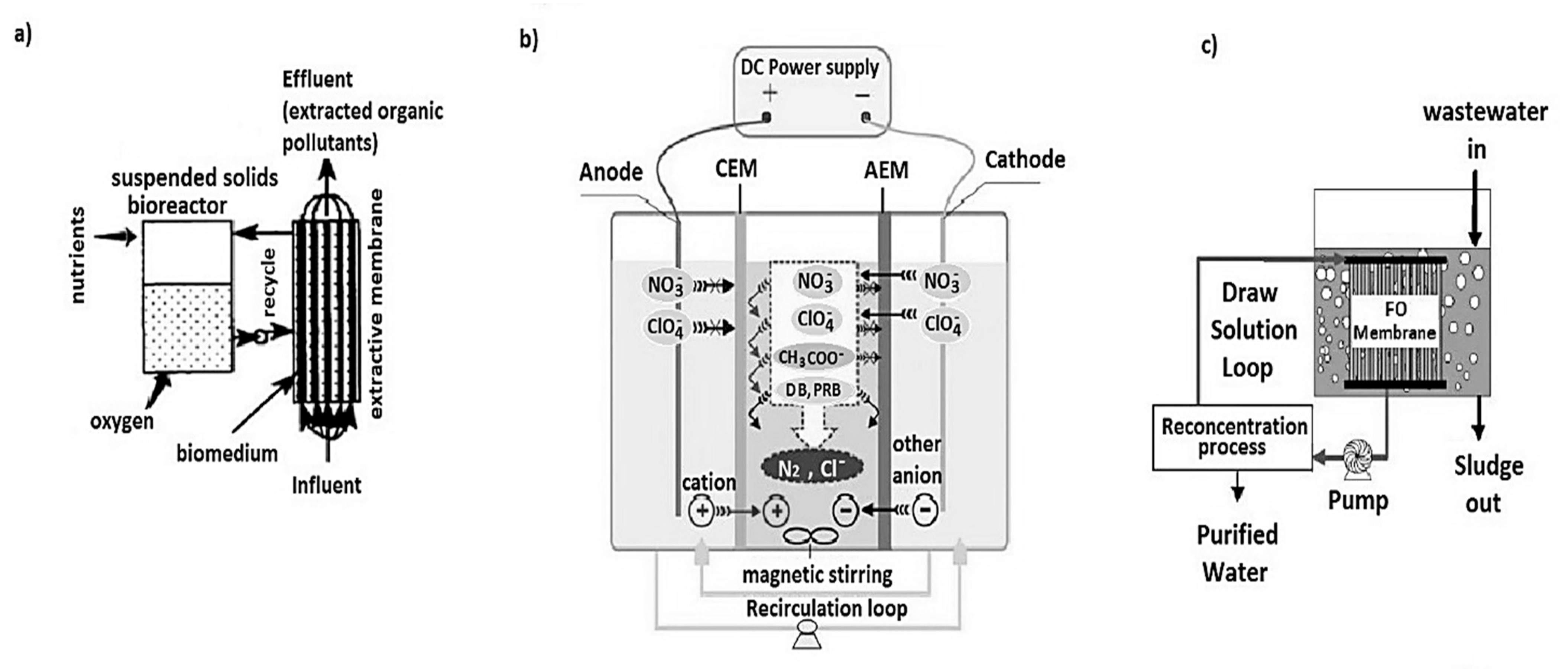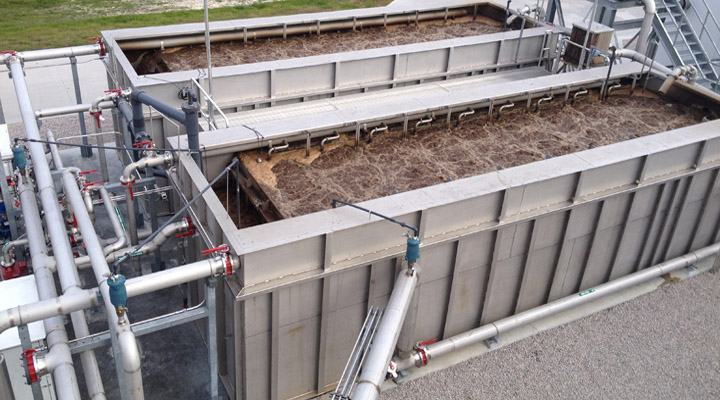How Membrane Layer Bioreactors Are Transforming Water Filtration Solutions
The development of membrane layer bioreactors (MBRs) stands for a substantial innovation in the area of water filtration, combining organic therapy procedures with sophisticated membrane layer purification technologies. As global water scarcity magnifies, the role of MBRs in helping with drinkable water reuse and sustainable water management becomes increasingly crucial.
Overview of Membrane Bioreactors
Membrane layer bioreactors (MBRs) represent a significant advancement in water purification modern technology, as they incorporate organic treatment processes with membrane purification. This assimilation improves the effectiveness of wastewater treatment by making use of microbes to break down organic pollutants while simultaneously using semi-permeable membrane layers to separate treated water from put on hold virus and solids.
The MBR system normally includes a biological activator where the microbial population metabolizes contaminants, adhered to by a membrane layer filtration device that preserves biomass and enables only tidy water to go through. This dual capability leads to higher effluent top quality compared to standard treatment approaches. MBRs can be operated in both batch and continuous circulation modes, supplying versatility in style and application.
They also allow the recuperation of water for reuse, thus contributing to water sustainability efforts. On the whole, MBRs are at the forefront of enhancing water therapy performance and quality, showcasing the potential for ingenious options in ecological monitoring.
Advantages of MBR Technology
The combination of biological treatment with membrane layer purification supplies numerous advantages for water purification processes. One of the primary benefits of Membrane Bioreactor (MBR) innovation is its capability to successfully get rid of both organic and inorganic contaminants, resulting in premium effluent. The membranes function as a physical obstacle, protecting against put on hold solids and virus from travelling through, which boosts the general security and dependability of treated water.
Additionally, MBR systems call for a smaller impact contrasted to traditional treatment techniques, enabling much more effective space utilization. This compact layout is specifically useful in metropolitan settings where land is limited. MBRs additionally show operational flexibility, accommodating differing influent high qualities and flow rates without substantial efficiency degradation.
Furthermore, the procedure uses improved nutrient elimination capacities, especially for nitrogen and phosphorus, which are crucial for preventing eutrophication in obtaining waters. The minimized sludge production linked with MBR innovation also converts to reduce disposal costs, making it a cost-effective remedy over time - Membrane Bioreactor. Overall, the benefits of MBR technology placement it as a leading option for lasting and ingenious water filtration systems, attending to both environmental and financial issues
Applications in Water Filtration
Applications of Membrane Bioreactor (MBR) modern technology in water purification are impactful and diverse, attending to various treatment requires across numerous sectors. MBRs successfully combine biological therapy processes with membrane purification, making them perfect for metropolitan wastewater treatment, industrial effluent monitoring, and even drinkable water reuse campaigns.
In metropolitan setups, MBRs are increasingly utilized to enhance the top quality of treated wastewater, allowing for compliance with rigid discharge laws and promoting the recycling of water for irrigation and non-potable uses. Their compact design also makes them appropriate for metropolitan atmospheres where area is restricted.
Industrially, MBR innovation is used to deal with procedure water and wastewater, particularly in markets such as food and beverage, drugs, and fabrics. By effectively removing contaminants and put on hold solids, MBRs aid sectors decrease ecological influences while recouping beneficial sources from wastewater streams.
Additionally, MBRs are getting traction in decentralized water therapy applications, where small-scale systems can be deployed in remote areas or creating areas. This versatility allows neighborhoods to achieve sustainable water monitoring options, improving access to clean water while reducing dependence on standard treatment methods.
Study and Success Stories

In another instance, a textile manufacturing center in Bangladesh adopted MBR modern technology to address its wastewater challenges. The system minimized chemical oxygen demand (COD) degrees from 1,200 mg/L to less than 100 mg/L, hence satisfying regulatory requirements and considerably minimizing environmental impact.
The University of Cape Community's MBR setup has actually verified reliable in treating greywater for non-potable reuse on university. This job not only conserves drinkable water however additionally works as an instructional model for lasting practices.
Moreover, a fish and shellfish processing plant in Norway made use of MBR technology to treat effluents having high levels of raw material, achieving over 90% contaminant elimination. These study underscore MBR innovation's convenience and its important duty in boosting water high quality throughout diverse applications.
Future of Water Treatment Solutions
As international water scarcity and contamination obstacles intensify, ingenious water therapy remedies are becoming progressively vital to ensure sustainable access to tidy water. The future of water therapy exists in the assimilation of advanced technologies that improve the effectiveness wikipedia reference and performance of filtration procedures. Membrane layer bioreactors (MBRs) go to the forefront of this evolution, combining biological treatment with membrane filtration to produce premium effluent appropriate for different applications.

Arising patterns such as resource recovery from wastewater, including nutrients and power, will certainly better change treatment facilities into eco-friendly centers. In addition, innovations in nanotechnology and membrane layer materials promise improved efficiency and durability of filtering systems.

Verdict
Finally, membrane layer bioreactors stand for a considerable advancement in water filtration innovations, effectively incorporating biological therapy with innovative membrane purification. The various benefits, including improved effluent high quality and reduced spatial needs, make MBRs particularly ideal for metropolitan applications. Their duty in drinkable water reuse and lasting water management highlights their relevance in dealing with international water shortage obstacles. Continued r & d will better improve the efficiency and adoption of MBR innovation, making certain a durable future for water therapy solutions.
The development of membrane layer bioreactors (MBRs) stands for a substantial advancement in the field of water purification, merging organic therapy procedures with sophisticated membrane layer filtration technologies. As global water shortage increases, the duty of MBRs in promoting potable water reuse and sustainable water management becomes increasingly crucial. They likewise allow the healing of water for reuse, therefore contributing to water sustainability efforts.As worldwide water scarcity and pollution challenges magnify, innovative water treatment solutions are becoming significantly essential to ensure lasting accessibility to clean water. Their role in potable water reuse and lasting water monitoring highlights their value in attending to worldwide water scarcity challenges.
Comments on “Exploring the Environmental Impact of Membrane Bioreactor in Wastewater Treatment”